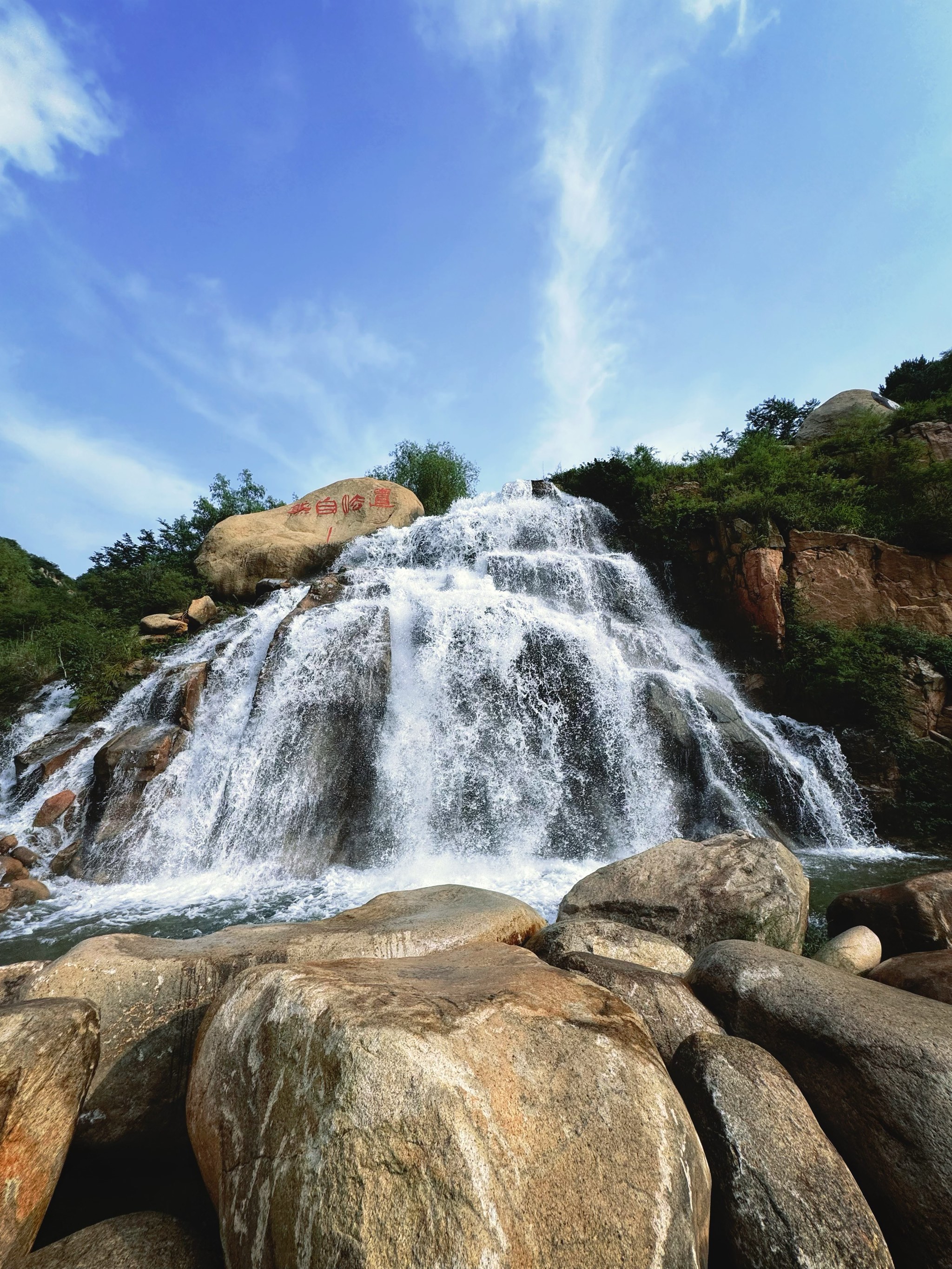Imagine standing at the rim of a vast canyon, the colors of the rock shifting with the sun's movement, feeling a profound sense of awe at a landscape millions of years in the making. Picture yourself gazing up at a monumental statue, a universal symbol of freedom and hope, or walking through the echoing halls where the nation's laws are shaped. The United States is a tapestry of such iconic destinations, each telling a unique story of nature, history, and ambition. A journey to these landmarks is more than a vacation; it's a pilgrimage through the heart of the American experience, offering perspectives that stay with you long after you return home.
The journey often begins on the East Coast, where early American history comes to life. In Washington, D.C., the National Mall is not a shopping center but a sprawling green anchor for the nation's most treasured monuments and museums. Here, you can walk from the Lincoln Memorial, where Martin Luther King Jr. delivered his "I Have a Dream" speech, to the towering Washington Monument, reflecting in the long pool. A short walk away, the U.S. Capitol Building and the White House stand as powerful symbols of the country's democratic governance. The best part? Most of the Smithsonian museums lining the mall offer free admission, making a trip here both inspiring and accessible. To make the most of your visit, consider a moonlight tour of the memorials; they are beautifully illuminated and often less crowded, creating a truly magical atmosphere.
Further north, the pulse of America quickens in New York City. No first visit is complete without a trip to the Statue of Liberty and Ellis Island. Lady Liberty, a gift from France, has welcomed millions of hopeful immigrants to American shores. To fully appreciate her significance, book ferry tickets that include pedestal access or, if you plan far in advance, the crown access for a breathtaking view of the New York Harbor. Nearby, Ellis Island’s National Museum of Immigration offers a moving tribute to the diverse stories that shaped the nation. Afterward, immerse yourself in the bright lights of Times Square and the serene expanse of Central Park. For a classic New York skyline view, a walk across the Brooklyn Bridge at sunset is an unforgettable experience, with the skyscrapers of Manhattan glittering against the evening sky.
Venturing south, the scenery changes dramatically. The Great Smoky Mountains National Park, straddling the border between North Carolina and Tennessee, is a world of mist-covered peaks and ancient forests. As America's most visited national park, it offers unparalleled biodiversity. Driving the Newfound Gap Road or hiking to waterfalls like Laurel Falls are popular ways to experience its beauty. For a truly unique experience, visit the park’s synchronous fireflies for a few weeks in late spring, a natural light show that draws visitors from around the globe. Not far away, the battlefields of Gettysburg, Pennsylvania, offer a solemn and powerful lesson in American history. A guided tour with a licensed battlefield historian can bring the pivotal three-day battle of the Civil War to life, helping you understand the immense sacrifices made on those fields.
Then, there is the monumental landscape of the American West. The Grand Canyon in Arizona is a destination that defies description. Its immense scale and intricate rock layers are a breathtaking geological timeline. While the popular South Rim offers iconic viewpoints like Mather Point and Yavapai Observation Station, consider visiting the more remote North Rim for a quieter, equally stunning perspective. To escape the crowds, hike a short distance down any of the inner canyon trails; even a half-mile descent changes your view and the experience entirely. For the adventurous, a multi-day rafting trip through the canyon on the Colorado River is the ultimate way to connect with this natural wonder.
A few hours' drive to the southeast lies another jewel: Utah’s Mighty 5 national parks. This circuit includes Arches, with its delicate stone spans; Canyonlands, a vast wilderness of canyons and mesas; Capitol Reef, a hidden gem with a unique geologic wrinkle; Bryce Canyon, a forest of crimson hoodoos; and Zion, with its towering sandstone cliffs. The best way to explore this region is on a classic American road trip, allowing you the freedom to hike The Narrows in Zion, witness sunset at Delicate Arch, and gaze at the stars in Bryce Canyon, which is an International Dark Sky Park.

Further north, Yellowstone National Park, primarily in Wyoming, is a land of geothermal wonders. It’s a place where the earth itself is alive. You can watch the predictable eruptions of Old Faithful geyser, marvel at the vibrant colors of the Grand Prismatic Spring, and observe a stunning array of wildlife, including bison, elk, and bears. Planning is key here; book accommodations inside the park well in advance to minimize driving and maximize your time exploring. Just south of Yellowstone lies Grand Teton National Park, where the jagged, dramatic Teton Range rises abruptly from the valley floor. It’s a paradise for hikers and photographers, offering some of the most iconic mountain scenery in the world.
On the Pacific Coast, California presents its own set of iconic sites. Yosemite National Park in the Sierra Nevada mountains is a cathedral of nature. The view of El Capitan and Half Dome from Tunnel View is one of the most photographed scenes in the country. Hiking to the top of Yosemite Falls or taking a stroll through the serene Mariposa Grove of Giant Sequoias are essential experiences. For a different kind of icon, the Golden Gate Bridge in San Francisco is an architectural marvel. Walking or biking across the 1.7-mile span, with the city skyline on one side and the vast Pacific Ocean on the other, is a quintessential Bay Area activity. Be prepared for the famous fog, which can roll in unexpectedly but adds to the bridge's dramatic character.
For many travelers, planning a trip to these iconic locations can feel daunting. The key to a successful journey is thoughtful preparation. First, decide on your travel style. Are you looking for a relaxing, resort-based vacation or an active, adventure-filled road trip? Your answer will help narrow down the destinations. For first-time international visitors, an East Coast circuit covering Washington, D.C., and New York City, perhaps with a stop in Boston, is highly manageable. Repeat visitors or those seeking vast natural landscapes might opt for a Western parks loop.
Timing is everything. National parks in the western United States are extremely popular and can become overcrowded during the summer months. Consider visiting in the shoulder seasons—late spring or early fall—when the weather is still pleasant, but the crowds are thinner. For example, autumn in the Great Smoky Mountains is spectacular due to the fall foliage, while spring in the desert parks like the Grand Canyon offers comfortable hiking temperatures.
When it comes to accommodations, book early, especially for popular park lodges inside Yellowstone, Grand Canyon, or Yosemite. These often sell out a year in advance. If you're on a road trip, mixing in stays in smaller gateway towns can provide a more local flavor and often better value. Packing wisely is also crucial. Even in summer, desert temperatures can plummet at night, and mountain weather is notoriously unpredictable. Layers are your best friend. Always carry more water than you think you'll need, and have a reliable map, as cell service is often non-existent in remote natural areas.
Ultimately, the iconic tourist sites of the USA offer more than just a photo opportunity. They are places that challenge your perspective, inspire wonder, and create a deep, personal connection to the land and its history. From the hallowed halls of government to the otherworldly landscapes carved by time, a journey through these landmarks is a journey into the very soul of America. It’s an adventure that invites you to explore, learn, and return home with a renewed sense of the world’s beauty and complexity.




发表评论